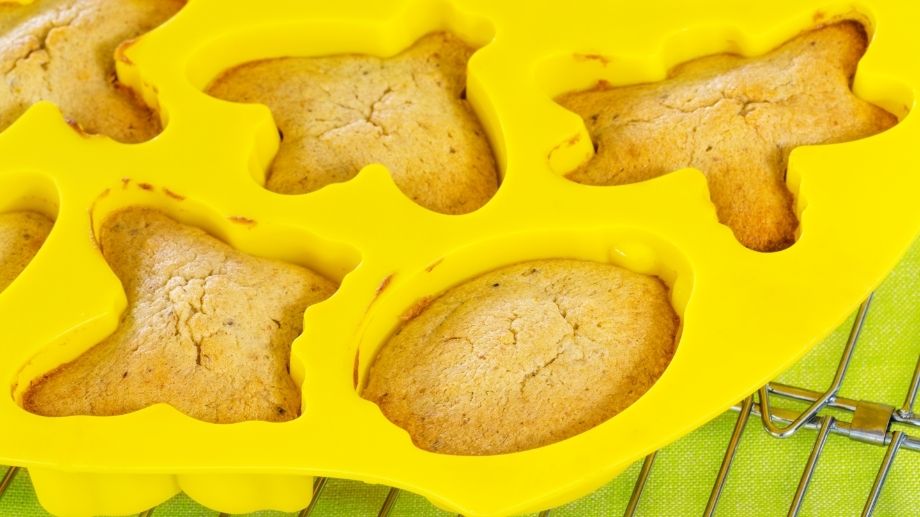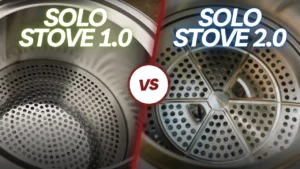Silicone bakeware is non-stick, user-friendly, able to withstand hot and cold, and comes in every shape or size your family needs. But one of the downsides of silicone kitchenware is that it can sometimes smell funky even after it’s been through the dishwasher.
Why does silicone bakeware smell funny and what can you do to fix it?
Silicone bakeware smells funny because it absorbs grease and odor molecules. The best way to remove the smell is to bake the tray empty or soak it in vinegar and water. Store dry silicone items in an airtight container so they don't absorb bad odors during storage.
It can be disappointing that after a few uses, and no matter how much you wash it, your silicone pans and spatulas are greasy and smell of onions and garlic.
Let’s look at why this happens, how you can avoid it, and what you can do to fix it.
Why Your Silicone Bakeware Smells Funny
There are three main reasons silicone bakeware can smell and taste funny, and all are to do with the material it’s made from – silicone.
The silicone used for kitchenware is a type of rubber made by mixing bonded polymers and oxygen. The mixture is heated and set or molded into various shapes during manufacturing.
Let’s look at why this material ends up stinking you out.
It Isn’t Only Silicone
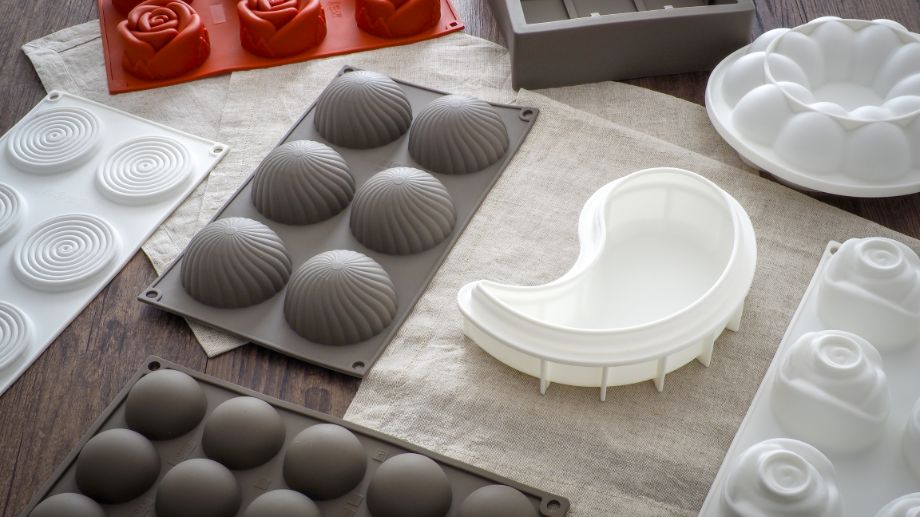
I hope for you sake this isn't the reason your silicone bakeware smells.
The first reason your silicone bakeware might stink, especially when heated, is because you’re using a poor-quality product.
Cookware-grade silicone is inert, meaning it doesn’t emit fumes, leach into food, or react with other substances. The FDA, therefore, considers it does not pose any health risks and is a good choice for kitchenware.
Unfortunately, to keep costs low and appeal to a broader market, producers add fillers to low-quality silicone bakeware – this means that your baking pan might not be only silicone. This is one of the biggest problems with some silicone trays. You can't know if it's pure silicone or not.
If you twist a baking pan and notice white lines forming, it’s filler you’re seeing.
Fillers are responsible for that unpleasant burning smell when baking and plastic taste when trying to enjoy your baked goods.
If you're finding an intense plastic or chemical smell coming from your over when you're cooking this is a bad sign! You should throw out those silicone baking trays (try to get a refund if possible) and but some new ones.
Invest in bakeware made by reputable manufacturers as these rarely have this issue.
Silicone Absorbs Odors
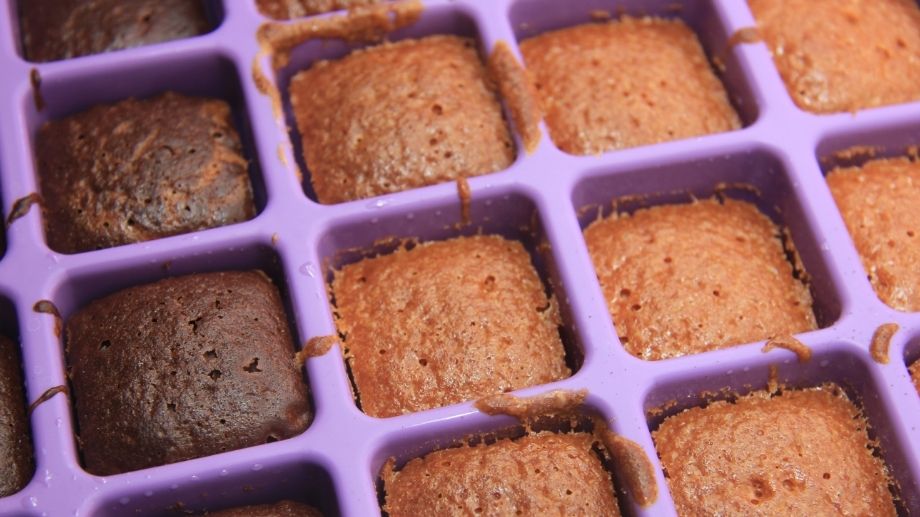
Because silicone is porous, it absorbs other kinds of molecules from the air, including scents.
You’ll notice this particularly if you have silicone ice trays, which can make your ice taste like garlic, make it taste plasticky and pick up a variety of pungent smells directly from the freezer. More on why silicone ice cube trays taste bad.
Silicone ice cube trays can even get a white residue from hard water. The porous nature of silicone means it can absorb smells and flavors really easily and impart them into your food.
The molecules build up on the surface of the silicone and impart their unpleasant flavor and taste to your food.
Even frequent washing seems unable to remove this layer.
Silicone Absorbs Fats
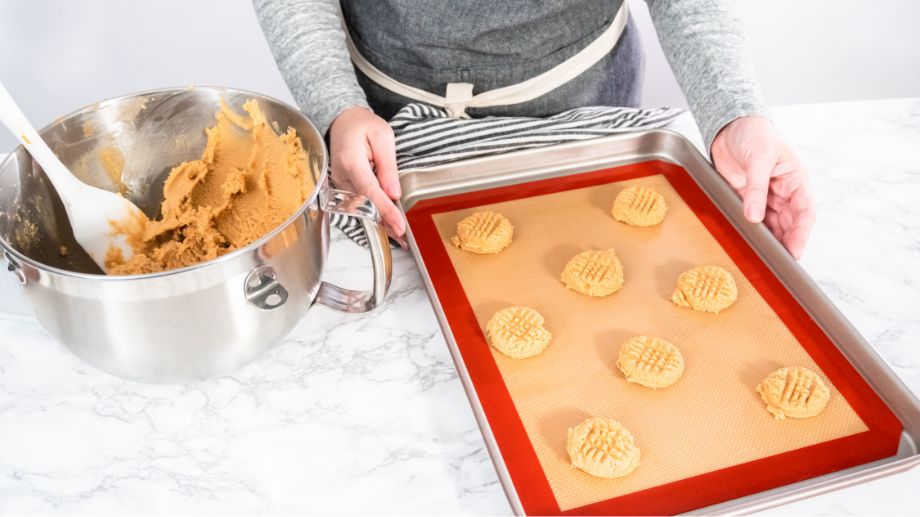
Another reason your silicone bakeware smells nasty even after repeated cleaning is because the rubber is porous. Porous material has tiny holes, allowing air and liquids to pass through.
While this characteristic is excellent when you want hot air and the buttery oils to reach your bakes, it’s not that great when your bakeware starts absorbing grease.
Grease traps smelly residues, like the burnt edges from last week’s cake or Sunday’s roast dinner, which are re-released when heated.
While you don't need to grease silicone baking pans as much as metal pans there are times you want to grease it and sometimes you're baking food that is greasy in and of itself.
You’ll often find that silicone pans remain sticky and odorous from this absorbed oil…residue despite washing.
To avoid this, allow any food baked in silicone pans to cool completely before turning it out. Doing this will also make releasing the bakes easier. You can also follow some of our cleaning steps below to help remove this grease as best as possible.
10 Ways To Fix Bad Silicone Bakeware Smells
What can you do if you’ve cleaned your silicone bakeware but a nasty smell lingers – or even a soapy flavor?
Fortunately, you don’t have to throw out all your silicone kitchenware once it starts stinking – there are solutions!
However, before you check out our cleaning tips, read the manufacturer’s instructions that came with your bakeware. Check what cleaning method they recommend: perhaps you’ve been using the wrong approach.
Some silicone bakeware requires hand-washing, while others need top-rack dishwashing. Some must be soaked with a specific product, then rinsed and dried. Follow the instructions first to see whether the smell goes away.
Here are 10 solutions that will have your silicone smelling fresh and clean without much effort and expensive cleaning supplies.
1. Bake The Smell Off In The Oven
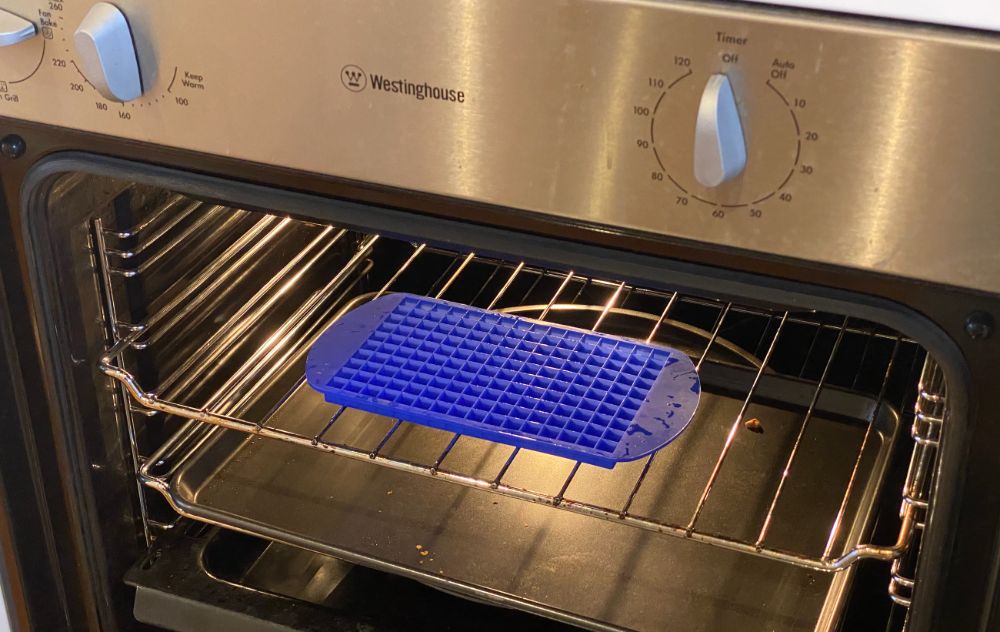
One of the most successful ways to clean your silicone bakeware is to bake it by itself.
This method is ideal for stubborn odors as the heat evaporates the molecules clinging to the silicone.
It's easy to do, requires little effort and best of all it actually works!!!
Here's how to do it:
- Preheat the oven to a moderate 350⁰F (180⁰C).
- Meanwhile, wash your items in hot soapy water and rinse thoroughly – you don’t want to be baking grease and oil into the silicone.
- Place the bakeware directly on the oven rack or a baking tray.
- Bake for 20 to 30 minutes.
- Put on oven gloves and remove the items. Carefully smell them. If they still smell funky, put them back for another 10-30 minutes.
- Continue checking every 10-30 minutes. The process can take up to an hour or sometimes even longer.
- Take out your kitchenware and allow it to cool before storing.
Below you can see a video showing you how to do exactly this:
2. Soak Your Tray In Water and Vinegar
This tip uses an old-fashioned cleaning product: vinegar.
Vinegar is an acid that is effective at breaking down grease. Here’s what to do:
- Combine equal parts of white vinegar (or lemon juice) and water.
- Soak your bakeware in the mixture for an hour.
- Rinse thoroughly to get rid of any last vinegar.
- Dry with a microfiber cloth.
You may even want to follow this up with the baking suggestion mentioned above to remove the vinegar smell.
Or you can then soak the silicone tray in hot water to remove some of the vinegar smell before rinsing and drying.
3. Run Your Tray Through The Dishwasher
Because your dishwasher gets really hot and runs through more than one washing and drying cycle, it may do the trick for your smelly bakeware.
Always place your silicone items in the top rack of the dishwasher and keep it away from knives which can easily slice through your favorite pan.
Avoid washing your silicone with other smelly items like eggs or garlic as this can actually add bad smells and flavors onto your silicone ice bakeware.
4. Use Baking Soda And Water To Scrub Your Trays

Baking soda is a well-known kitchen cleaner and deodorizer which removes grease and stubborn dirt by breaking up the molecules.
Because the grease that your silicone has absorbed may be causing the whiff, using baking soda is an excellent idea – so long as the manufacturer’s instructions allow it. Baking soda can be abrasive and will damage low-quality silicone products. Follow these steps:
- Make a paste combining equal parts of baking soda and water.
- Rub the paste all over your silicone bakeware and leave overnight.
- Scrape off the paste in the morning.
- If there is still a lingering smell, repeat the process.
5. You May Need To Buy More Trays
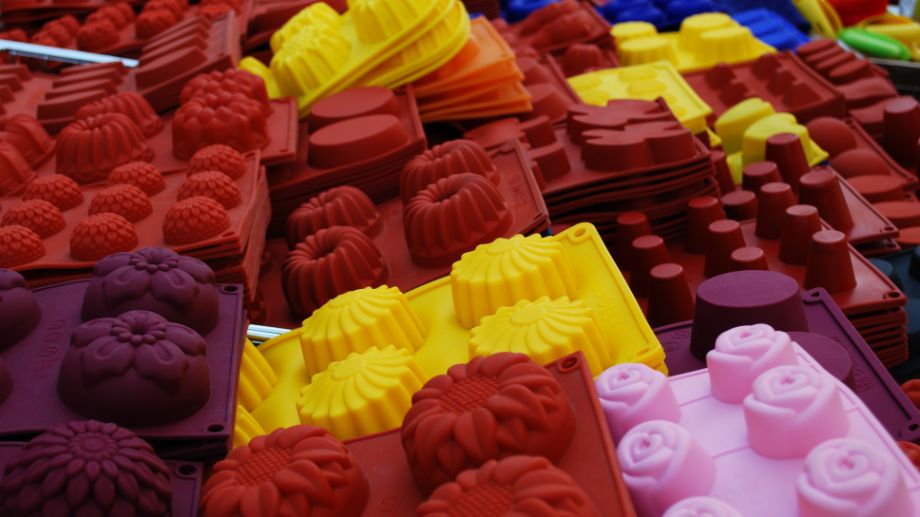
Unfortunately, if you’ve bought cheap or poor-quality silicone bakeware, you may never be able to get rid of niggling odors.
The materials used for silicone bakeware aren’t heavily regulated, so you need to find a reputable brand that guarantees its products are 100% silicone.
Invest in some quality bakeware that will last for years and that you can keep clean effectively.
6. Store Your Trays In Airtight Containers/Ziploc Bags So They Don’t Absorb Smells
The challenge with silicone is that it does absorb scents and oils. To avoid this during storage, keep your bakeware airtight when you’re not using it. Two ideas are:
- Store your bakeware in giant airtight plastic containers or freezer bags.
- Place smaller items in Ziplock bags.
7. Use Soap And Water
If your trays aren’t too smelly, its simplest to get smells out of silicone using dishwasher detergent, hot water, and a non-abrasive sponge.
The soap in detergents pulls the grease into clumps and then breaks it down, washing any oil away. Here’s what to do:
- Put on dishwashing gloves, as the water is hot and the silicone will release grease.
- Fill your sink with hot water (don’t burn yourself) and a few drops of detergent.
- Soak your kitchenware in soapy water for 20 to 60 minutes, depending on how foul it smells.
- After soaking, scrub the pans and spatulas with a non-abrasive sponge.
- Rinse the bakeware in hot water to ensure no soap remains.
- Dry with a microfiber cloth.
8. Use Bleach, Soap, And Water
If the smells are stubborn and the manufacturer’s instructions allow it, soak your kitchenware in a bleach mixture.
- Mix two teaspoons of bleach into two gallons of hot water.
- Soak your smelly silicone for two minutes.
- Rinse with plenty of hot water and dry with a microfiber cloth.
- Repeat as necessary to remove the odors.
9. Boil The Smell Away
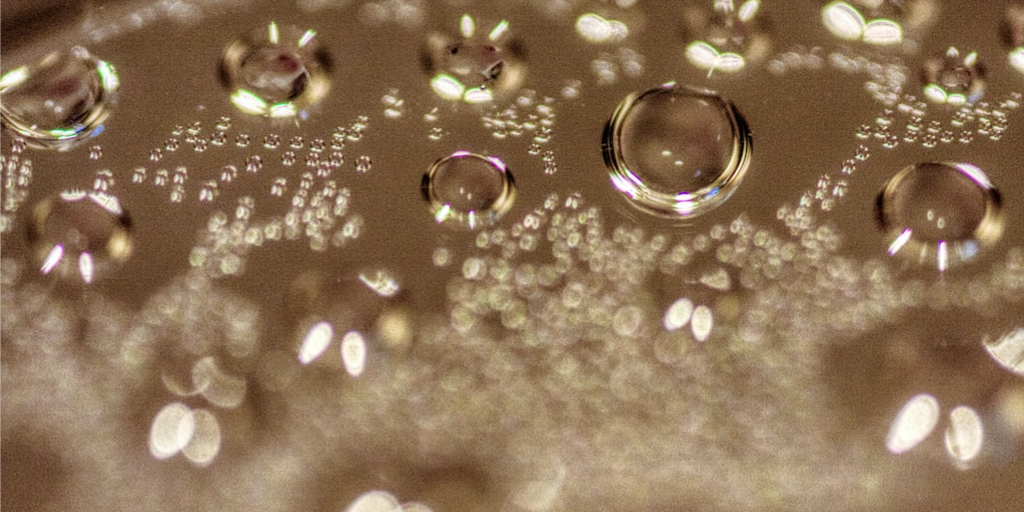
In the past, housekeepers would boil their kitchenware, handkerchiefs, and socks for absolute cleanliness.
This method works only for 100% silicone, which can withstand extremely high temperatures. It’s simple:
- Heat a large pot of boiling water.
- Put in your silicone items and boil them for a few minutes.
- Remove the bakeware and allow it to air dry completely before storage.
10. Bake With Baking Soda
Combine the baking technique with deodorizing baking soda for extra-clean bakeware. The heat and baking soda combined will eliminate any lingering grease and foul odors.
Follow the steps for baking your pans clean.
- Make sure your bakeware is dry.
- Before placing the bakeware in the oven, sprinkle it with a light coating of baking soda.
- Bake for 20 minutes.
- Remove the bakeware from the oven.
- Tip out the flakes of browned baking soda.
- Rinse the items thoroughly, dry, and store.
Note that any process that involves heating your bakeware can’t be used if it contains any plastic. For a method of cleaning silicone items, especially ice trays, that doesn’t include heat, check out How To Clean Silicone Ice Cube Trays.
Key Takeaways
Silicone is notorious for absorbing grease and scent molecules, leaving your bakeware unpleasantly smelly. Get rid of this stink using soap, water, bleach, vinegar, baking soda, or heat.
Here’s how to clean your silicone bakeware and get rid of the smell:
1. Bake the smell off in the oven.
2. Soak your tray in water and vinegar.
3. Run your tray through the dishwasher.
4. Use baking soda and water to scrub your trays.
5. You may need to buy new trays.
6. Store your trays in airtight containers/ziploc bags so they don’t absorb smells.
7. Use soap and water.
8. Use bleach, soap, and water.
9. Boil the smells away.
10. Bake with baking soda.

